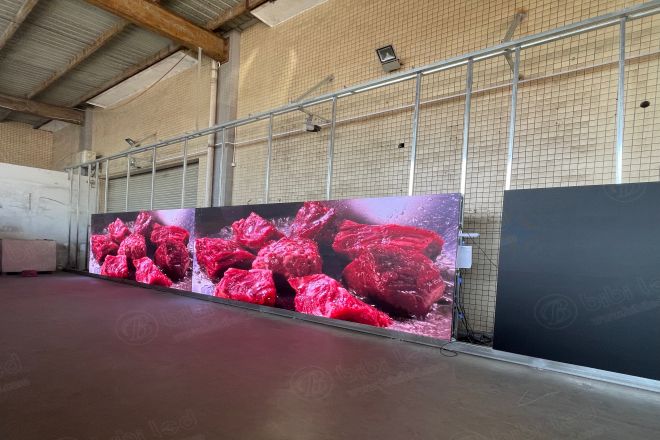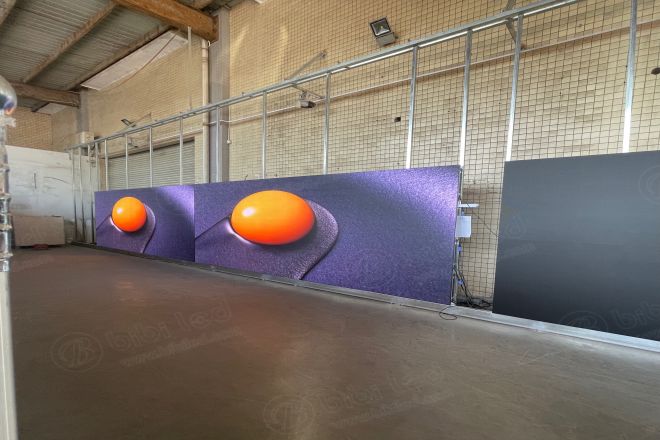Introduction

Every LED display needs to go through layers of quality inspection before it comes out, and only qualified products can be delivered to customers. In this layer of quality inspection, aging testing is the most important and time-consuming test.
This article will give you an in-depth understanding of the aging test of LED displays. Let’s take a look.
1. Definition and purpose of LED display aging test
The aging test is mainly to test the working performance of the LED display in various simulated environments, such as high temperature, high humidity, temperature cycle, etc. The main purpose is to ensure the quality and reliability of the product, predict the service life of the product, and optimize the design of the product.
Through the aging test, problems in the product can be found and repaired in time to avoid failure in actual use. At the same time, through the analysis of the test results, the service life of the product can be predicted and provide a basis for the maintenance and update of the product.
In addition, through the analysis of aging test data, we can find the shortcomings of product design and provide a direction for the optimized design of the product.
2. How to conduct LED display aging test

LED display aging test is an important link to ensure the quality and reliability of products. The following are the general steps for the LED display aging test:
Appearance inspection: First, check whether the appearance of the LED display is intact and whether there are any scratches. This helps to ensure that the product has no obvious defects before the aging test.
Light up aging: Use the online control system to light up the LED display and light it continuously for more than 72 hours. This is to simulate the long-term working state of the product in actual use to detect its performance and stability.
Indicator test: After the aging test is correct, the parameter index test is carried out. This includes brightness tests, color temperature tests, color uniformity tests, image saturation tests, display consistency tests, color rendering index tests, etc. These tests are designed to evaluate the performance of LED displays under various indicators.
When conducting the LED display aging test, you should also pay attention to the following points:
Constant conditions: The test needs to be carried out under constant voltage, current, temperature, and humidity conditions. This helps to simulate the environmental conditions of the product in actual use and ensure the accuracy of the test results.
Interference and filtering: During the test process, it may be necessary to add interference sources and corresponding filters to simulate electromagnetic interference and other factors in actual use.
Application and cycle: The cycle of the LED display aging test depends on the test item and implementation standard. Generally speaking, the application cycle will not be too long and can be completed in one to two weeks. Test applications can be made by contacting the certification testing institution directly.
Test report: After the test is completed, a detailed test report should be provided. The report should include test items, test results, test environment, test time, and other information. This helps users better understand the performance and life of the LED display.
After completing the aging test, the customer will receive a certificate of inspection, just as the physical examination certificate after our physical examination is almost the same.
3. How long does it take to test the aging of the LED display?

Our salesmen have always had a problem, that is, most of our customers think that the LED display screen can be packaged and shipped directly after production, but this is not the case. In order to ensure quality, they also need to undergo one test after another, in which the proportion of aging testing is relatively long.
The aging time of the LED display depends on many factors, such as the size, brightness, driving mode, use environment, etc. Generally speaking, the average life of the LED display can reach more than 100,000 hours, so the aging time usually ranges from a few hours to dozens of hours.
The aging time of the LED display is mainly determined according to the characteristics and application requirements of the product. During the aging test, parameters such as brightness, color, and refresh rate are usually used to simulate various situations in actual use. At the same time, the display screen will be tested for a long time to test its stability and reliability.
The aging test is one of the quality inspection links for LED displays, and qualified products will be delivered to customers. However, this does not mean that maintenance is not required for installation and subsequent use. A good product also needs to be well cared for later.
Conclusion
That’s all about this article. Do you have a detailed understanding of the aging test?
If you still want to know more about LED displays, welcome to consult!
